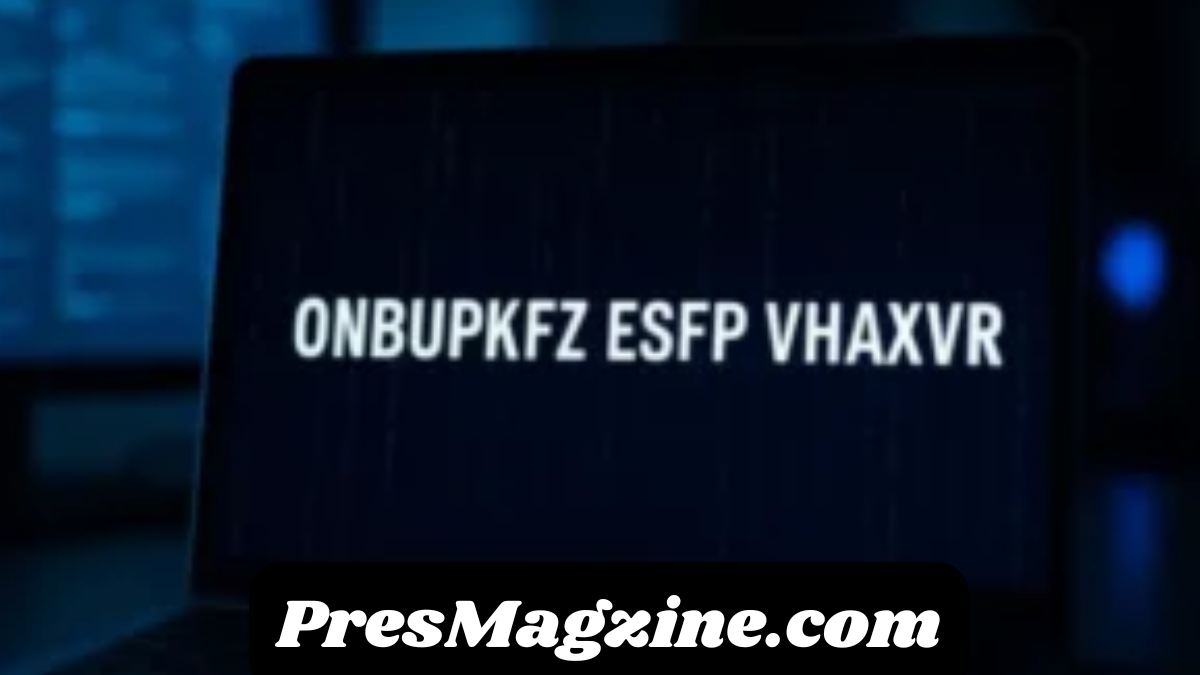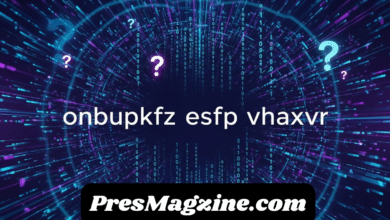Understanding the Nature of Obscure Keywords
The phrase “onbupkfz esfp vhaxvr” does not resemble any conventional linguistic structure, recognizable word pattern, or existing term in known languages. When analyzing such a phrase, it is crucial to explore the possibility that it may be either a cipher, a randomly generated combination, or a form of digital code used in specific technical contexts.
In digital linguistics and the study of semiotics, seemingly meaningless sequences often carry hidden value. They can be placeholders, pseudorandom strings, or identifiers. Therefore, the exploration of “onbupkfz esfp vhaxvr” requires a flexible approach that encompasses linguistics, cryptography, psychology, and digital systems.
The Cryptographic Interpretation
One potential avenue for interpreting “onbupkfz esfp vhaxvr” is through the lens of cryptography. Historically, encryption has been used to transform readable information into complex, unintelligible strings that protect the content from unauthorized readers. Such a transformation can generate outputs that resemble the phrase in question.
In this context, “onbupkfz esfp vhaxvr” could represent an encoded message using a substitution cipher or a modern encryption algorithm. If this is the case, deciphering it requires understanding the system or key that was used. Many ciphers rearrange letters based on keys, such as Caesar or Vigenère ciphers, while modern ones employ more sophisticated mathematics.
From a theoretical standpoint, the randomness of the phrase might be intentional, designed to obfuscate or serve as a digital identifier. These identifiers are critical in areas such as blockchain, secure communications, and cloud computing, where each user or asset must be assigned a unique code.
ESFP: A Jungian Typology Perspective
Amidst the cryptic structure of the phrase, the segment “esfp” stands out as a recognizable psychological term within the Myers-Briggs Type Indicator (MBTI). In this framework, ESFP represents a personality type defined by four key traits: Extraverted, Sensing, Feeling, and Perceiving. These individuals are often described as lively, outgoing, and grounded in the present moment.
Exploring “onbupkfz esfp vhaxvr” with this understanding, one could speculate that the phrase may describe or relate to the ESFP personality in an abstract or metaphorical way. If “onbupkfz” and “vhaxvr” are placeholders for certain experiences or attributes, then the phrase might encode a unique ESFP-related concept, such as a specific behavioral model, digital simulation, or psychological archetype.
ESFPs are characterized by their strong interpersonal skills, enthusiasm, and appreciation for sensory experiences. In the digital era, these traits can manifest in how individuals engage with virtual environments, gaming, social media, and augmented experiences. Perhaps “onbupkfz esfp vhaxvr” is the title of a simulation project or virtual prototype focusing on human-centered design aligned with ESFP psychology.
Digital Identity and Unique Identifiers
In data systems and computer architecture, strings like “onbupkfz esfp vhaxvr” are often used as unique identifiers. For example, in distributed databases, each transaction or user may be assigned a globally unique identifier (GUID). These alphanumeric strings prevent duplication and ensure consistency across systems. Unlike human-readable names, such identifiers are intentionally complex and unique.
From this angle, “onbupkfz esfp vhaxvr” may represent such a unique identifier. It might point to a user account, software instance, encryption key, blockchain token, or metadata tag. These identifiers are not meant to be interpreted semantically; instead, their function is to guarantee uniqueness and traceability.
This kind of random string becomes especially relevant in the development of decentralized applications, cloud-based platforms, and cybersecurity systems. Here, secure transmission and identity management depend heavily on such identifiers.
The Role of Randomness in Generative Systems
Randomness is a cornerstone in many modern computational systems. Procedural generation in video games, AI text generation, and secure password creation all rely on random string generation. In some cases, strings like “onbupkfz esfp vhaxvr” could be the output of a random generation tool meant to serve a specific function, such as testing or seeding algorithms.
Artificial intelligence, particularly in creative domains, often uses randomness to simulate diversity, unpredictability, and novelty. In AI-generated storytelling, design prototyping, or art synthesis, such phrases may be used as seeds that lead to entirely different outputs depending on the system’s configuration.
In evolutionary computation and genetic algorithms, randomness plays a critical role in exploring solution spaces. Each “genome” in a simulated population might be tagged with a unique identifier for performance tracking. In this light, “onbupkfz esfp vhaxvr” might represent an individual within a larger digital experiment.
Psychological Symbolism and Abstract Representation
Another interesting path for interpreting the phrase is through the lens of abstract symbolic representation. In dream analysis, semiotic theory, and surrealist art, seemingly random elements often symbolize complex psychological states or experiences. While “onbupkfz esfp vhaxvr” might appear as noise, its structure—three distinct segments—could be meaningful.
If interpreted symbolically, “onbupkfz” could represent an internal experience or challenge, “esfp” could stand for a person’s innate temperament, and “vhaxvr” might signify an external force or future trajectory. This abstract construction offers a way to model human consciousness or psychological evolution in metaphorical terms.
Symbolic systems frequently employ invented languages and unfamiliar phrases to distance meaning from literalism. In literature and philosophy, such distancing can encourage deeper introspection, forcing the audience to interpret meaning through intuition and association rather than logic.
Artistic and Experimental Literature Usage
The use of invented words has been a hallmark of experimental literature, poetry, and surrealist art. Writers such as James Joyce, Lewis Carroll, and Anthony Burgess often created new lexicons to better express psychological states, futuristic societies, or alienated worldviews. A phrase like “onbupkfz esfp vhaxvr” could easily appear in a dystopian novel or avant-garde poem, serving as a linguistic anchor for an alternate reality.
Within speculative fiction or game design, such a phrase might be the name of a planet, a character, a mysterious code, or an alien language. These uses create immersive storytelling environments where language itself becomes a tool of mystery and exploration.
Furthermore, contemporary digital artists and creators may integrate such phrases into their installations or generative artworks, adding layers of intrigue and symbolic resonance. A gallery piece titled “onbupkfz esfp vhaxvr” might explore themes of identity, perception, or machine-human interaction.
Technological Systems and Artificial Naming Conventions
In the field of software development, automated systems often assign pseudo-random names to files, packages, or test cases. For instance, containerized environments like Docker or CI/CD pipelines generate names like “eager_morse” or “cranky_babbage.” The combination “onbupkfz esfp vhaxvr” might be similarly constructed by a system for convenience, without semantic meaning.
Naming conventions are crucial in managing scalable and automated processes. In AI training experiments, filenames and log entries may be tagged with complex strings to track versioning, datasets, and hyperparameters. These names often serve internal documentation purposes rather than being user-facing.
The value of such identifiers increases with system complexity. As cloud environments grow, human-readable naming becomes insufficient. Unique alphanumeric strings ensure operational integrity in deployments and version control.
Language Generation and AI Experimentation
Natural language processing (NLP) systems have made great strides in understanding, generating, and analyzing language. During the training of such systems, vast datasets of human and non-human text are processed, including random strings or obscure input. In some experiments, systems are given phrases like “onbupkfz esfp vhaxvr” to test their responses to unknown input.
These tests help researchers understand the boundaries of AI interpretation, pattern recognition, and hallucination. How does an AI react to noise? Can it find patterns where none exist? These questions have deep implications for language modeling, cognitive simulation, and machine creativity.
Moreover, the ability to interpret or reframe randomness is a marker of intelligence, both artificial and human. The attempt to analyze or make meaning from “onbupkfz esfp vhaxvr” is itself a demonstration of the human (or AI) impulse to seek order and narrative from chaos.
Social Media and Internet Culture
In online communities and social networks, random strings sometimes become part of meme culture or digital folklore. A phrase like “onbupkfz esfp vhaxvr” could easily evolve into a meme, especially if it originates from a glitch, a game, or a viral post.
Internet users often appropriate meaningless phrases, attaching in-jokes, meanings, or emotional weight to them. Over time, what began as nonsense can evolve into a symbol of community identity or digital rebellion. Such behavior underscores the fluid, creative nature of online expression and shared meaning-making.
From usernames and tags to glitch art and digital poetry, random strings like “onbupkfz esfp vhaxvr” become artifacts of internet culture. They symbolize the playfulness, unpredictability, and intertextuality that define much of our online experiences.
Conclusion: The Multifaceted Identity of “onbupkfz esfp vhaxvr”
The phrase “onbupkfz esfp vhaxvr” may appear nonsensical at first glance, but its structure invites curiosity and interpretation. Whether viewed as an encryption artifact, a psychological metaphor, a digital identifier, or an artistic expression, this phrase exemplifies how meaning can be both hidden and constructed.
In a world increasingly shaped by code, language, and abstraction, such strings challenge us to rethink our assumptions about meaning, identity, and communication. They encourage exploration across disciplines—cryptography, psychology, artificial intelligence, and art—inviting us to find resonance in randomness and structure in the seemingly chaotic.
FAQs
What does “onbupkfz esfp vhaxvr” mean?
It does not have a standard definition. It could be interpreted as a cipher, unique digital identifier, or artistic phrase.
Is “esfp” part of a personality classification system?
Yes, ESFP is a personality type in the Myers-Briggs Type Indicator (MBTI), representing Extraverted, Sensing, Feeling, and Perceiving.
Could this phrase be part of a digital project or code?
Absolutely. It resembles identifiers used in programming Onbupkfz Esfp Vhaxvr cryptography, and data systems for tagging, encryption, or indexing.
Can AI make meaning from nonsense phrases?
AI models can generate interpretations and analyze patterns, even when the input appears random. It’s part of their capacity to model human-like reasoning and creativity.




